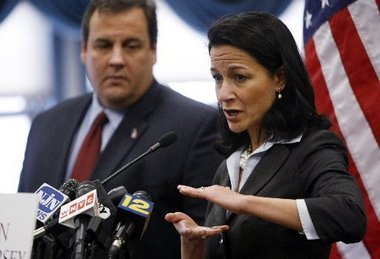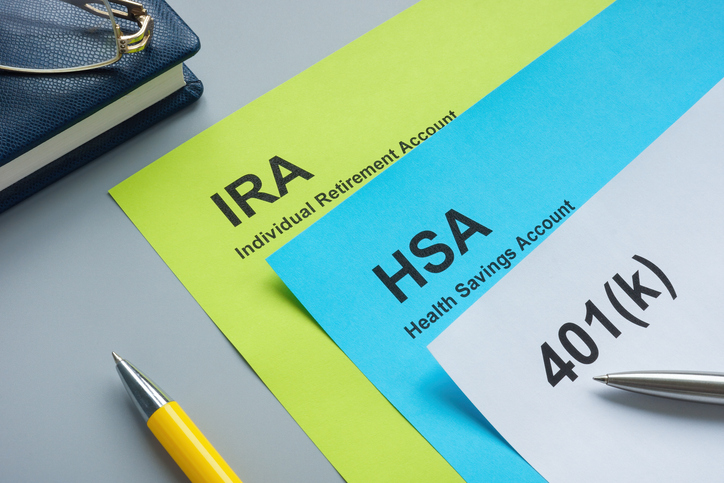Consumer Power Report #334
Over the past week, we’ve heard from a wide variety of liberal sources amazed at the idea that states would reject the billions in “free money” from the federal government to expand their Medicaid programs under President Barack Obama’s health care law. Indeed, the federal matching rate for the expansion – which covers people at 100 to 138 percent of the federal poverty level (FPL) – is quite generous, set at 100 percent federal tax money for 2014–2016, 95 percent in 2017, 94 percent in 2018, 93 percent in 2019, and 90 percent in 2020 and beyond.
Seems pretty tempting, doesn’t it? Former head of Medicare and Medicaid Don Berwick found the idea any state would turn it down inconceivable. Of course, this inconceivable possibility has now become inevitable, with many states already announcing they will not accept the Medicaid dollars, including seven states which have said a flat no. This map shows you which direction your state is leaning.
Why would a state reject this money? One reason is that the current estimates, which the New York Times recently highlighted, don’t pass muster with the states. These numbers are derived from Kaiser’s initial May 2010 report on the expansion, which went through state by state results. You’ll notice they cut off the assessment at 2019, not 2020, coincidentally the year before the total state responsibility hits 10 percent, as it would be in out years. But these figures are in conflict with many of the calculations arrived at by state officials – an update of this 2011 report is in order summarizing their views. And states are inclined to trust their own estimates.
Consider the case of Texas for one example of why states are pausing. As Ezra Klein points out, “Texas covers only working adults up to 26 percent of the poverty line.” Texas, along with about half the country, has a Medicaid program that is minimal compared to states like New York and others. You can see the rankings of income eligibility for low-income adults here (it’s more generous to kids, but you’ll note you have to go through 26 – mostly red – states to get above 70 percent of FPL).
And this is a key problem for the states. While the federal money is indeed generous for the newly eligible population, it is less so for the rest. For your currently eligible population, you only have the regular Medicaid matching rate, which ranges from 50 to 76 percent. For Texas, it’s around 60 percent. Kaiser calculates that over the first five years of the program, 95.7 percent of the funding will come from the federal government, and not the state. But the state doesn’t agree – they understand that one of every four Texans currently eligible for the program isn’t signed up, and that for this population, they’ll only have a match of around 60 percent. As the report linked above notes, “The Texas Health and Human Services Commission estimated that Texas alone will be forced to spend $27 billion – more than the program’s entire annual budget today.”
Thus, the Medicaid expansion is far less attractive to those states with minimal programs, where already eligible people will likely come out of the woodwork to sign on to the system, driving up the costs for the state itself. This has already been proven true in Minnesota, which expanded its program early. The same is expected to be true in numerous other states, adding up to a huge chunk of change for states that already have Medicaid programs overburdened thanks to the recession and doctors who cannot see all the patients.
The administration should expect states to continue to reject this expansion for this reason, and one more too: because smart governors understand that by rejecting, they obtain leverage over Washington in negotiations, far more than if they had accepted the money with the strings attached. And these governors know that once you add new people to the system, you will never get them out of it.
— Benjamin Domenech
IN THIS ISSUE:
THE MEDICAID EXPANSION AND THE COSTS TO THE STATES
Chris Jacobs has more:
On the substance, it’s easy to see why states would be greatly concerned. As Matt Salo, head of the National Association of Medicaid Directors, stated, the idea that the Medicaid expansion is “free” to states is nothing but a massive prevarication:
“State officials retort that the notion that expansion is free for states until 2017 is ‘a big lie,’ in Salo’s words. While the federal government will pay many of the administrative costs, states will share in the expense of some information technology and personnel. And the requirement that most individuals carry insurance is expected to spur at least some of an estimated 13 million people who currently qualify for Medicaid, but are not enrolled to sign up, Salo said. States will receive their traditional federal funding match for those people.”
Those administrative costs will be significant – one Heritage Foundation study pegged them at nearly $12 billion in the first six years alone. And there’s also the fact that the law’s spending reductions are widely predicted by experts to be unsustainable, meaning it’s entirely possible Congress could reduce the federal Medicaid match –sticking the states with even more added costs – down the line if lawmakers need to undo Medicare payment reductions to ensure seniors still have access to care.
More fundamentally, however, the ruling gives states something they have not had in their relations with the federal government in quite some time – leverage. The federal government will no longer be able blithely to dismiss state concerns, or order them to expand Medicaid just as Washington says – or else. It’s particularly noteworthy that just one day after the Supreme Court ruling, former Speaker Pelosi publicly floated the idea of “re-thinking” the federal Medicaid match – increasing the federal share to compensate states for their unfunded mandates. It’s unclear whether that would actually happen – or if so how the increased federal payments would be paid for – but it shows that in light of the ruling, federal politicians cannot ignore states’ concerns, a step in the right direction in restoring the long-lost balance between Washington and the states.
SOURCE: U.S. Sen. Jim DeMint
EXCHANGE SUBSIDIES ARE THE NEW FRONT IN THE BATTLE OVER OBAMACARE
Brawling over an IRS rule that attempts to undo the specific language of PPACA:
Representative Phil Roe, Republican of Tennessee, said the rule on premium subsidies “contradicts the explicit statutory language” of the Patient Protection and Affordable Care Act. Mr. Roe and another Tennessee Republican, Scott DesJarlais, have introduced a bill to nullify the rule, issued by the Internal Revenue Service.
Douglas H. Shulman, the I.R.S. commissioner, defended the rule as consistent with the intent of Congress. “The statute,” he said, “includes language that indicates that individuals are eligible for tax credits whether they are enrolled through a state-based exchange or a federally facilitated exchange.”
However, Senator Orrin G. Hatch of Utah, the senior Republican on the Senate Finance Committee, said the Obama administration was usurping the role of Congress and rewriting the law to provide tax credits through federal exchanges. …
James F. Blumstein, a professor of constitutional and health law at Vanderbilt University, said the dispute over subsidies involved a serious legal issue.
“The language of the statute is explicit,” Mr. Blumstein said. “Subsidies accrue to people who obtain coverage through state-run exchanges. The I.R.S. tries to get around that by providing subsidies for all insurance exchanges. That interpretation will almost certainly be challenged by someone.”
The most likely challenger, Mr. Blumstein said, is an employer penalized because one or more of its employees receive subsidies through a federal exchange. Employers may be subject to financial penalties if they offer no coverage or inadequate coverage and at least one of their full-time employees receives subsidies.
Michael F. Cannon, director of health policy studies at the libertarian Cato Institute, said the link between subsidies and penalties was a crucial part of the law.
“Those tax credits trigger the penalties against employers,” Mr. Cannon said. If workers cannot receive subsidies in states with a federal exchange, their employers cannot be penalized, he said. That, in turn, would hobble federal efforts to get employers to offer coverage in those states, Mr. Cannon said.
For more on this issue, read last week’s CPR on the ramifications of implementation. For more on the details of this week’s House vote, read this article in The Hill.
SOURCE: New York Times
RICK PERRY: NO, TEXAS WON’T IMPLEMENT
Add Texas to the list of non-implementers, for all the above reasons:
Neither a “state” exchange nor the expansion of Medicaid under the Orwellian-named PPACA would result in better “patient protection” or in more “affordable care.” What they would do is make Texas a mere appendage of the federal government when it comes to health care.
The PPACA does not truly allow states to create and operate their own exchanges. Instead, it gives the federal government the final say as to which insurance plans can operate in a so-called “state” exchange, what benefits those plans must provide, and what price controls and cost limits will apply. It leaves many questions to be answered later through federal “future rulemaking.”
In short, it essentially treats the states like subcontractors through which the federal government can control the insurance markets and pursue federal priorities rather than those of the individual states.
Through its proposed expansion of Medicaid, the PPACA would simply enlarge a broken system that is already financially unsustainable. Medicaid is a system of inflexible mandates, one-size fits-all requirements, and wasteful, bureaucratic inefficiencies. Expanding it as the PPACA provides would only exacerbate the failure of the current system, and would threaten even Texas with financial ruin.
SOURCE: Texas Tribune
HOW WOULD THE IRS ENFORCE THE INDIVIDUAL MANDATE?
The AP asks a kind of important question: How does this work?
Those who don’t get qualified health insurance will be required to pay the penalty – or tax – starting for the 2014 tax year, unless they are exempt because of low income, religious beliefs, or because they are members of American Indian tribes.
The penalty will be fully phased in by 2016, when it will be $695 for each uninsured adult or 2.5 percent of family income, whichever is greater, up to $12,500. The nonpartisan Congressional Budget Office estimates that 4 million people will pay the penalty that year.
The law, however, severely limits the ability of the IRS to collect the penalties. There are no civil or criminal penalties for refusing to pay it and the IRS cannot seize bank accounts or dock wages to collect it. No interest accumulates for unpaid penalties.
So how can the IRS enforce the mandate? Scary letters and threats to withhold tax refunds.
The law allows the IRS to withhold tax refunds to collect the penalty, and most filers get refunds. This year, 77 percent of the 135 million individual income tax returns processed by the IRS qualified for a refund. The average refund: $2,707.
For those who don’t qualify for a refund, a stern letter from the IRS can be effective, even if it doesn’t come with the threat of civil or criminal penalties, said Elizabeth Maresca, a former IRS trial attorney who supervises the Tax & Consumer Litigation Clinic at the Fordham University law school.
“Most people pay because they’re scared, and I don’t think that’s going to change,” Maresca said.
The IRS has not yet issued procedures for taxpayers to prove they have insurance. But IRS Commissioner Douglas Shulman, in a 2010 speech, said he envisioned a process similar to the one used by taxpayers to report interest or investment income.
Under this scenario, an insurance company would send the taxpayer and the IRS forms each year verifying that the taxpayer has qualified insurance. Taxpayers would file the forms with the IRS along with their returns, and the IRS would check them to make sure they match the information supplied by the insurance companies.
SOURCE: Yahoo News
STATES INTERPRET MEDICAID DECISION TO ALLOW CUTBACKS NOW
It looks like Maine’s going first:
Within hours of the Supreme Court’s ruling on June 28, lawyers in the Maine attorney general’s office began preparing a legal argument to allow health officials to strike more than 20,000 Medicaid recipients from the state’s rolls – including 19- and 20-year-olds – beginning in October to save $10 million by next July.
“We think we’re on solid legal ground,” Attorney General William Schneider said in an interview. “We’re going to reduce eligibility back to the base levels in a couple of areas,” he said. Maine, like some other states eyeing cuts, earlier expanded its Medicaid program beyond national requirements.
Other states, including Wisconsin and Alabama, are expected to follow Maine’s lead, though there is disagreement over whether the high court gave the states such leeway. That could lead to battles between states and the federal government that could drag the health law back to the courts. New Jersey and Indiana also said they were evaluating the decision and did not rule out challenging the requirements.
The federal Department of Health and Human Services is still examining the court’s ruling and its implications for eligibility rules, an official said.
SOURCE: Wall Street Journal
FIVE WAYS TO KILL OBAMACARE WITHOUT REPEAL
I’m skeptical of some of these, but worth noting particularly the number one option:
Under the law, the federal government is supposed to build health insurance exchanges for states that don’t create their own. But with Romney’s help, those states could defeat that effort, too, even if the law remains unchanged.
A quirk in the language of the law – which the law’s supporters call a “drafting error” – could allow Romney to make it basically impossible for federally run exchanges to function. That’s because the law doesn’t explicitly give federal exchanges the ability to provide the same insurance subsidies that it will give to state-run exchanges.
Obama’s Internal Revenue Service issued rules intended to eliminate this problem, but Romney’s IRS could reverse that interpretation of the law.
This couldn’t happen overnight. A Romney administration would have to launch a full rulemaking process with a comment period and would have to provide extensive justification for the change, which would likely be challenged in court.
The Romney campaign has said it is sticking to its executive order strategy. “Gov. Romney’s Day One plan includes an executive order instructing federal agencies to return maximum possible authority to the states. This will include as much flexibility as the law permits. He will then begin the work of fully repealing Obamacare and replacing it with common-sense reforms that will ensure Americans have access to the highest quality health care in the world,” campaign spokeswoman Andrea Saul said by email.
But if Romney took this route, it could mean that a large number of the people who expected to get coverage in the federal exchange won’t be able to buy in. And many of these people will then be exempt from the individual mandate since the insurance for sale will likely be too expensive for it to meet the health reform law’s “affordability” test.
This could dramatically shrink the number of people buying insurance in federally run exchanges, which means they could collapse altogether. For that reason, said the Cato Institute’s Michael Cannon, reversing the IRS rule “is the most important thing that Mitt Romney can do to repeal Obamacare.”
SOURCE: Politico





